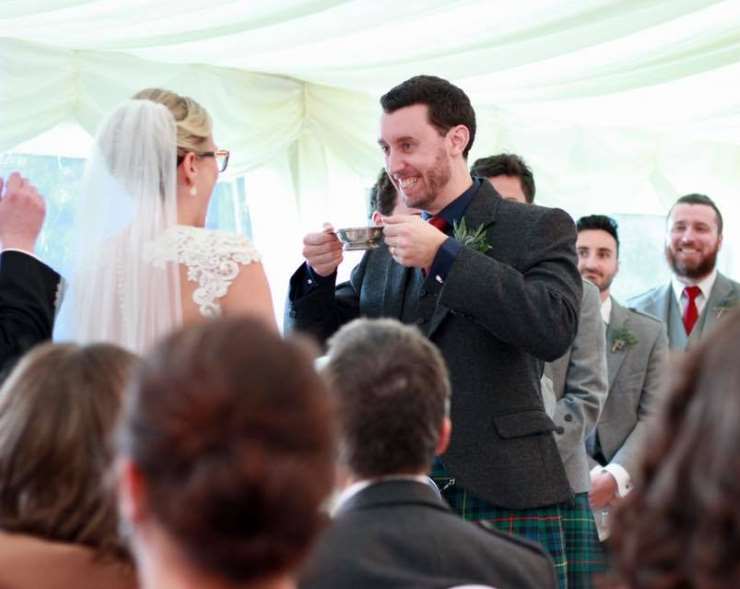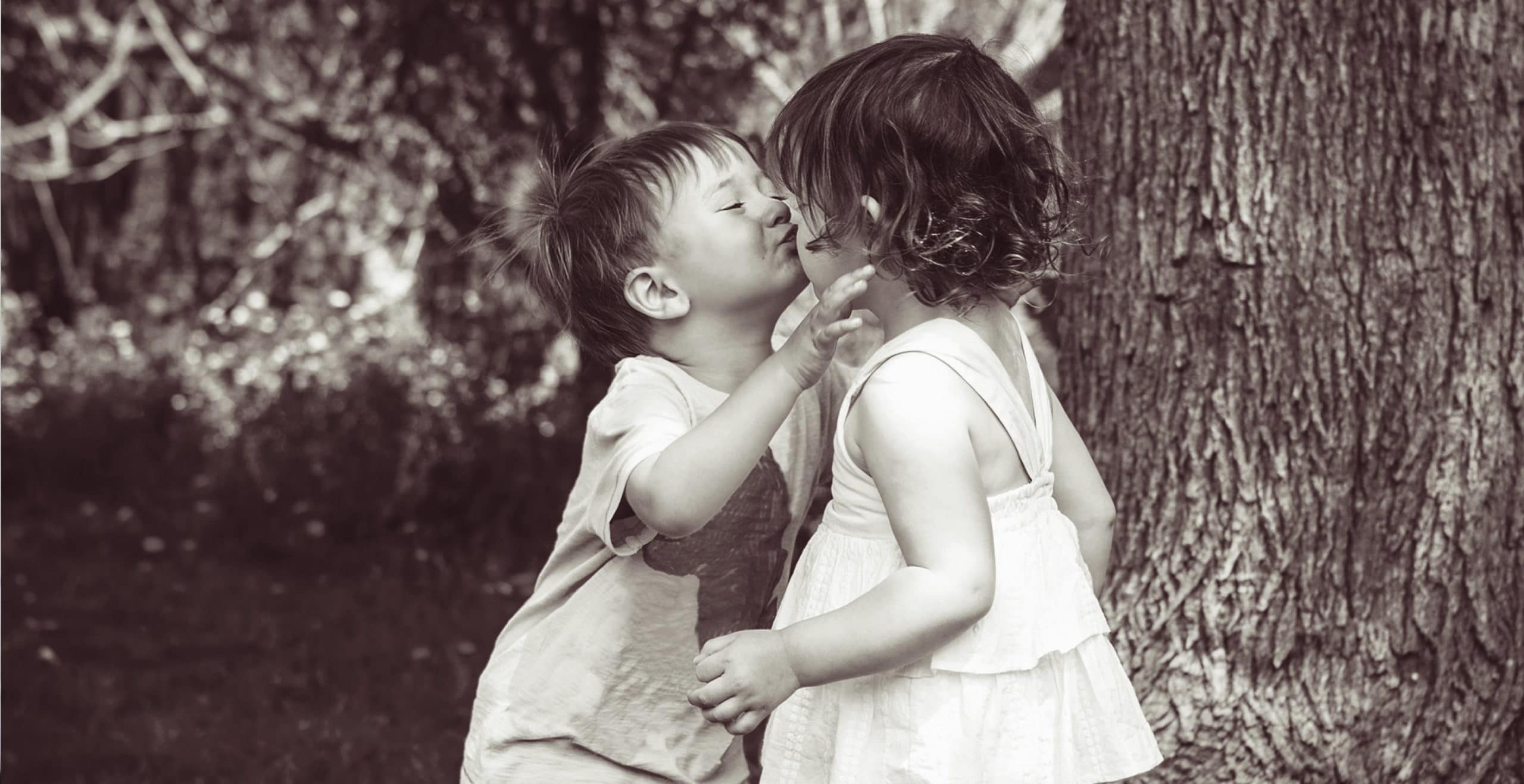Tying the Knot, Paying-the-Piper and Having a Dram: a guide to traditional Scottish wedding practices and their origins.
Tying the Knot
Today, tying the knot is universally acknowledged as meaning ‘getting married’ and this is true of secular, religious, pagan or even Hollywood weddings! Tying the knot has become synonymous with marriage. However, have you even wondered where this expression came from or what it really means? Well, originally it was a Scottish custom that originated in medieval times that was, and in fact still is, practiced during marriages. In Scotland today, many couples (including myself!) literally tie-the-knot on their wedding day!
What happens during the ceremony is that the bride and groom both provide a strip of cloth, usually their clan tartan, but it can be anything, and in fact rope, scarves and even dog-leads have been used for this purpose. The person conducting the wedding ceremony will position the bride and groom’s hands one over the other and then tie their wrists together with the fabric, and with some impressive maneuvering and manipulating, will cause the fabric to be tied in a knot as the couples pull their hands apart and the fabric fastens tightly together in a knot. It is a beautiful part of the marriage ceremony, usually coming at the point where the couple legally commit themselves to each other. The couple are then married and they will have the physical knot as a keepsake and physical representation of their union forever. Many choose to have their knots framed or mounted. The hand-fasting ceremony (this is what it is usually referred to as in Scotland) is legally recognized as part of a legitimate marriage ceremony in Scotland to this day.

However, what has become a sweet and symbolic joining of two people and indeed two clans today, has a far less romantic beginning. Historically, tying the knot was conducted in the same way (although probably not with dog-leads!) however the meaning was very different. Typically, if the bride had not produced a child and was not pregnant within one year and one day of the knot being tied, then the husband could divorce her without recourse! Happily, in these modern times this part of the ceremony is no longer recognized. But the physical tying of the knot and the legitimacy of the practice survives!
Paying-The-Piper
Paying-the-Piper as a phrase could have innumerable origins, and is known to refer to pipers leading troops to war, the idiom, ‘he who pays the piper calls the tune’ and even perhaps to the myth of the Pied Piper of Hamlin. However, what is certain is that it also has a very specific meaning in traditional Scottish weddings. Scottish pipers have been around for centuries, and in fact after the Battle of Culloden in 1746 pipes were declared by the English as a weapon of war and the playing of bagpipes was banned in Scotland for the following 50 years.

Luckily today, the playing of bagpipes has much more romantic connotations. Many Scottish weddings have a piper; not only is it a beautiful Scottish tradition, it is also considered lucky, particularly when the bride and groom have completed their marriage ceremony and are being piped into their dinner. The skirl of the bagpipes was thought by many to scare away any evil spirits that may be hovering near by, and in this way the piper’s music would protect the bride and groom as they entered into their marriage and bless it with good luck. For this to be effective however, a kind of contact had to be observed; the piper had always to be paid for his services with a dram of whisky. Once he has seen the bride and groom safely to the top table he is toasted by the groom and ‘paid’ in a dram of whisky, legitimizing the contract and thus ensuring that the protection offered by the piper’s music was effective. The dram of whisky is offered in a Quaich, which in turn has its own unique purpose and traditions…
Having a Dram
One final tradition that is often observed during both traditional and modern Scottish weddings is blessing the marriage with a dram of whisky, drunk from a ceremonial Quaich. A Quaich is a two-handled silver or pewter dish, often give to the couple as a wedding present and engraved with the date of the wedding. The Quaich is filled with whisky during the ceremony, and then once the bride and groom are ‘legally’ married they seal the wedding with a drink, and of course what is a more traditional Scottish drink than Whisky! Although again, in these modern times anything and everything can be used, from Irn-Bru to warm beer or cold tea!

Traditionally the bride is given the Quaich to drink from first, and then the groom must finish what she doesn’t, although this part is definitely optional on the part of the groom! A Quaich is used for a specific reason however, and not just because it represents beautiful Celtic design – no, the Quaich must be held with both hands. This is extremely important as historically a marriage would often join two Scottish clans together, and these clans were not always on speaking terms. Because the Quaich had to be drunk with both hands it showed trust in the opposite clan and was a mark of honour and respect. The reason being if both hands were on the Quaich, neither were holding a weapon! Traditionally the Quaich would have been handed round all of the clan leaders present after the bride and groom had drunk their fill. Today it is usually passed around anyone and everyone in the wedding who wants a dram!
By Terry MacEwen, Freelance Writer.







